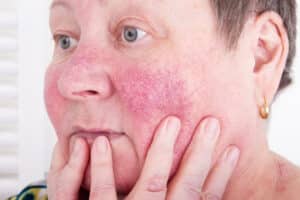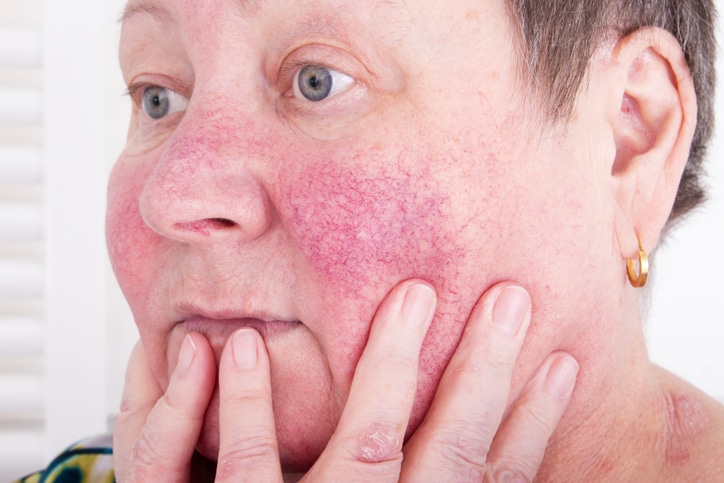
Rosacea is a word that never comes to mind, as most people have never heard of it. But maybe they should do a little research — it’s estimated that 14 million Americans have rosacea. Most of them just don’t know it.
Dr. Musick can spot it and can help you deal with this skin condition.
What is rosacea?
Rosacea is a common skin disorder that usually affects the skin on the face. It shows itself in redness on the nose, chin, cheeks, and forehead. It starts as simple redness, as if blushing, but if left alone rosacea can develop into a more ruddy redness.
While usually on the face, rosacea can also appear on the chest, back, or neck. It can even affect the eyes, making them appear bloodshot and watery. Rosacea can lead to solid red bumps and pus-filled pimples. It can make a person very self-conscious.
What causes rosacea?
The skin may be the human body’s largest organ, but it still holds its mysteries. Rosacea is one of them. The exact cause of rosacea is unknown. One line of thinking holds that rosacea is a disorder of the blood vessels. Other theories involve microscopic skin mites, fungus, psychological factors, and a malfunction of the connective tissue under the skin.
Symptoms
Although symptoms of rosacea vary greatly between people, the condition will always include at least one of these primary signs:
- Flushing— This is often the earliest sign of the disorder, where the person frequently blushes or flushes.
- Persistent redness— This may resemble a sunburn or blush that doesn’t pass.
- Visible blood vessels— Small blood vessels may become visible on the skin.
- Bumps and pimples— This can resemble acne, as small red bumps or pus-filled pimples form. There are never blackheads, though.
- Eye irritation— Called ocular rosacea, this involves bloodshot, watery eyes. Styes can also result.
- Dry appearance— The central facial skin may appear dry, but is actually just very rough.
- Plaques— These are raised red patches, similar to what is found in psoriasis, but the surrounding skin is unaffected.
- Burning or stinging— The face may constantly feel tight or burning/stinging sensations can develop.
- Swelling— Facial swelling.
- Skin thickening— This usually occurs on the nose and is called rhinophyma, where the skin enlarges due to the production of excess tissue.
Diagnoses and treatment of rosacea
While there is no specific test for rosacea, Dr. Musick is very familiar with the disorder. Treatments are individual, but include medications, both oral and topical, to bring the condition under control. Procedures can be performed to remove visible blood vessels and lessen reddening. Patients also need to avoid certain triggers. Dr. Musick will walk you through things to understand and watch out for.
That persistent redness to your facial skin probably isn’t blushing due to embarrassment. It could be rosacea. Call Dr. Musick at (618) 628-2588 to make your appointment.

